Shaanxi, China
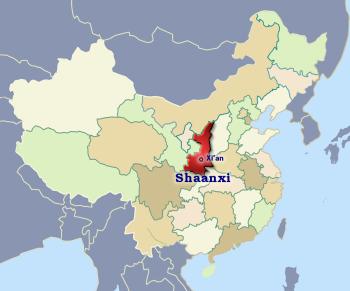
| Province | Shǎn xī 陕西 'Shanzhou west' |
| Short name | 陕 Shǎn |
| Capital | Xi'an |
| Population | 39.529 million (2.80%) [16th] comparison table |
| Area | 206,000 km2 [79,537 mile2] (2.15%) [11th] |
| GDP | 66,235 (10.47%) [14th] |
| Neighbors | Shanxi Inner Mongolia Henan Chongqing Sichuan Gansu Ningxia Hubei |
| Others | or just click on the map |
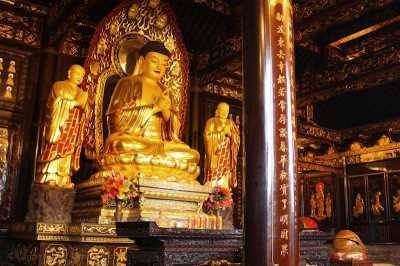
Shaanxi (the double ‘a’ denotes a different vocal tone that distinguishes it from its confusingly named neighbor Shanxi) is one of the provinces where Chinese culture had its birth. It is one of only a few provinces named after a specific place, Shanzhou is a city in Henan, so ‘Shaanxi’ is west of Shanzhou.
Shaanxi History
Hominid remains in Shaanxi go back as far as 1.15 million years with Lantian Man ➚ found south east of the provincial capital Xi'an. More modern archaeological remains of the Banpo Culture ➚ dating back 6,000 years were found close to Xi'an; here a whole community has been unearthed showing their round timber houses, a cemetery, pottery kilns and storage pits. The site demonstrates how settlement began on the rich alluvial soils along the Huang He (Yellow) and Wei rivers. The mythical founders of China: Yandi and Huangdi (Yellow Emperor) are both reputed to have lived in Shaanxi. It was home to the tribes that formed the Zhou and Qin dynasties and here are to be found many of the archaeological treasures of ancient China. In the ancient Zhou dynasty China's capital was at Hao which is near to present day Xi'an.
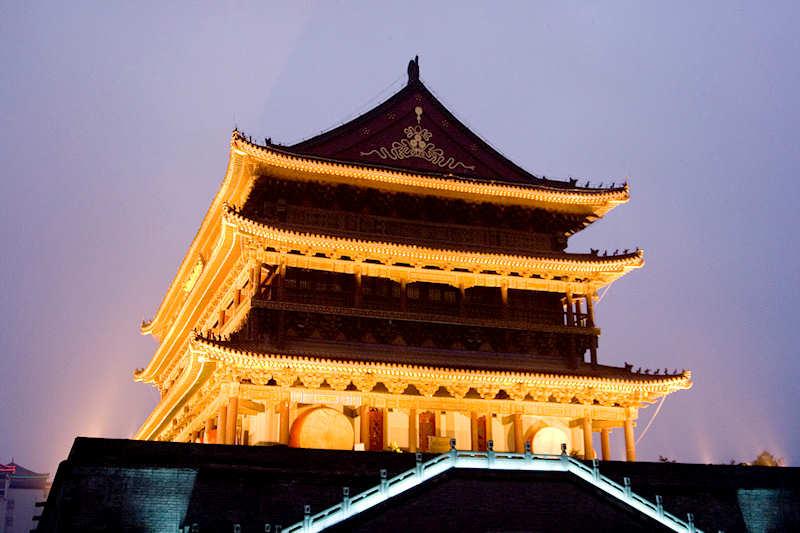
Image by Jeremy Barwick ➚ available under a Creative Commons license ➚
In the Qin dynasty the Imperial capital moved to Xianyang just to the west of Xi'an. Xianyang boasts a museum containing a Han dynasty miniature version of the terracotta army. Nearby is the full sized version, the world famous Qin Terracotta warriors at the Imperial tombs just east of modern Xi'an. The provincial capital city of Xi'an stands on the site of Chang'an; the capital of China in teh Tang dynasty and for a long while the largest city in the world with over a million people within its city walls. Two thousand years ago a canal was built alongside the treacherous Wei and Yellow Rivers to provide easier access by boat. Much later on, after the fall of the Tang, continual incursions from the north drove people further south and east. The ancient over-land Silk Road that led to Chang'an, lost its strategic importance when transport by sea became safer and cheaper.
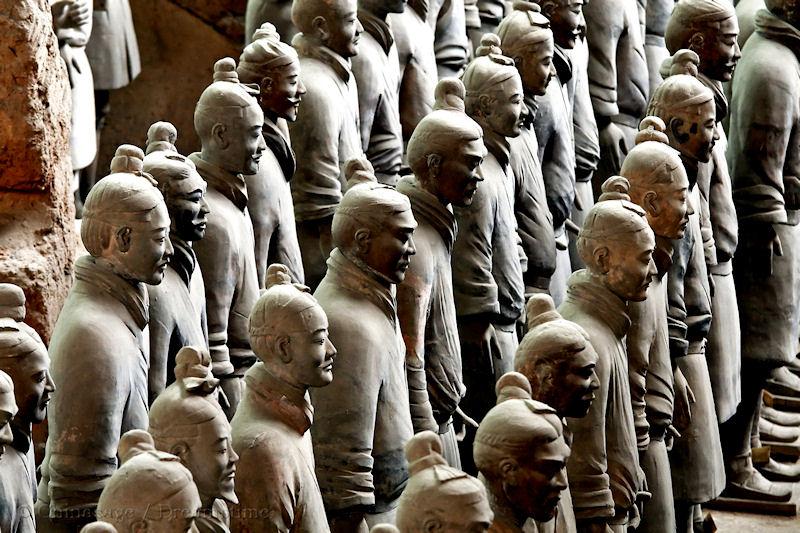
Haixian ➚ 70 miles [113 kms] east of Xi'an was the epicenter of the world's deadliest earthquake on Mon Jan 23 1556 when 830,000 people lost their lives. Also in Shaanxi, there was a great famine in 1628 which resulted in the Li Zicheng rebellion and the downfall of the Ming dynasty. After this time people moved away south from the area and it began to be settled by people from the north who had converted to Islam. The new settlers rose up in the Dungan Revolt (1862-77) ➚ which was ruthlessly put down by the Qing army killing many millions of Muslims. The province then became a disregarded backwater, with Xi'an the only major city in China where foreign powers did not demand a protected enclave. It was to Xi'an in 1900 that Dowager Empress Cixi fled after the failure of the Boxer Rebellion.
Shaanxi now boasts about 70% of all ancient buildings in China with many dating back a thousand years. Like many inland provinces, modern development has been relatively slow. It is a province likely to benefit from the current Belt and Road Initiative ➚.
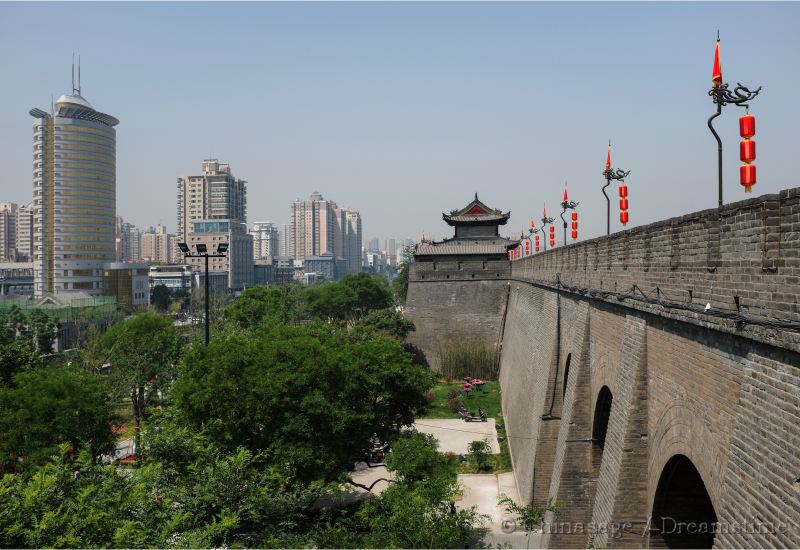
Xi'an
Xi'an's walls were built in the Ming dynasty at an impressive height of 35 feet [11 meters] and width 40 feet [12 meters]. Within these walls there are a large number of ancient buildings worth visiting, most notably: the Big ➚ and Little Goose Pagodas ➚; Stele Forest and a Great Mosque ➚. The Big Goose Pagoda (大雁塔 Dà yàn tǎ) dates back to 652 originally built with five stories now expanded to seven, it housed the early Buddhist scriptures brought back from India by Xuanzang. It is also known as the Wild Goose Pagoda and is built in brick, but incredibly without any cement between the layers. The Little Goose Pagoda stands in the grounds of the Jianfu Temple, little altered since it was built in 709.
Xi'an has a Stele forest contains 1,700 inscribed stones with fine calligraphy some dating back thousands of years. The inscriptions cover the classics, history and biographies of China from the Han to Tang dynasties. For centuries students of the great masters took rubbings of the calligraphy so they could study them, the earliest form of printing. The Great Mosque, built in 742, is one of the largest and oldest in China. Also worth a visit is the fascinating early Christian church turned Buddhist temple Daqin Pagoda ➚ (Daqin 大秦) is an old Chinese name for the Roman Empire). The most significant Daoist temple is the Baxian temple of the Eight Immortals. At the center of Xi'an are the ancient Bell and Drum Towers, these towers announced dawn and dusk respectively each day.
The Famen Temple ➚ holds important relics attributed to Buddha. The Tang Emperor Taizong broke with the tradition of an extensive burial mound by instead quarrying out a tomb in the mountains at Zhaoling 47 miles [75 kms] northwest. A little further out are the tombs of Tang emperors Gaozong ➚ and Empress Wu Zetian (the only Chinese Empress who ruled in her own right) at Qianling. The vast tomb of Princess Yong Tai ➚ can also be visited. The hills to the north of the city are full of tombs. With all this history, Xi'an boasts many well stocked museums of ancient artifacts. The Shaanxi History Museum ➚ houses objects of interest from many dynasties.
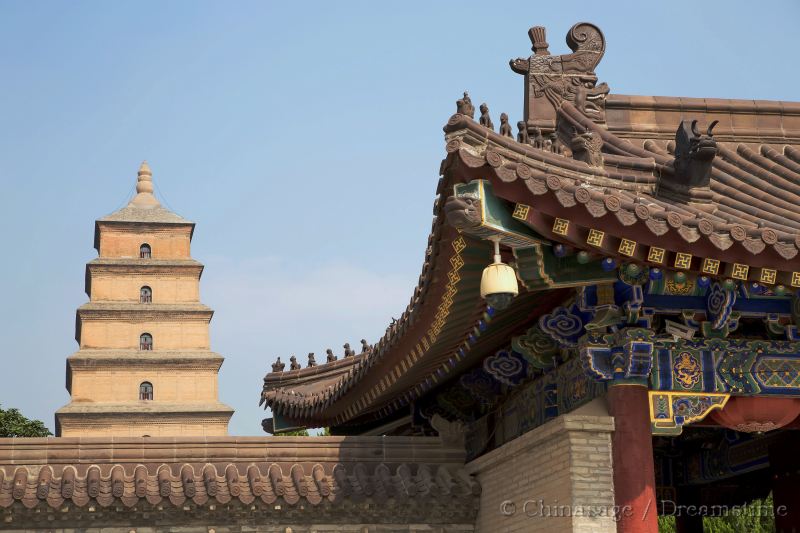
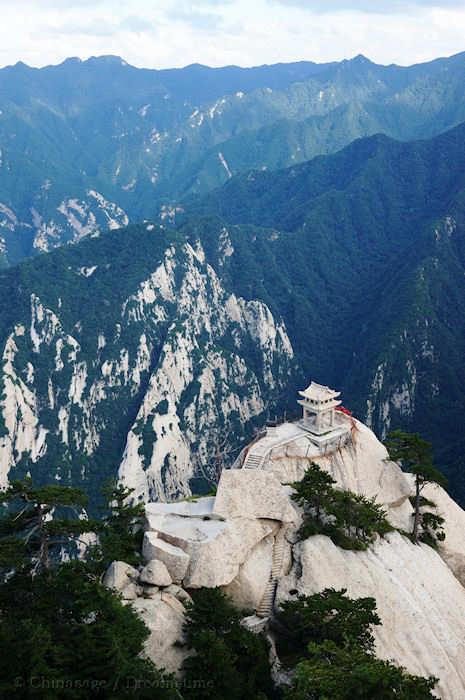
Other places to visit in Shaanxi
The tomb of Qin Shihuangdi, the unifier of China, is the must-see tourist destination in Shaanxi. The tomb took 36 years to build with about 500,000 slave laborers and yet only a tiny proportion of the vast tomb area has been excavated. The tomb is a large artificial mound 249 feet [76 meters] high. It is believed that at its center is a model of his great empire with liquid mercury used to represent the rivers. The terracotta warriors that guard the tomb were discovered by accident in 1974, 19 miles [31 kms] east of Xi'an. Eight thousand figures have been found, some with horses and equipped with real weapons (crossbows; swords; javelins). The figures were mass produced in several parts and assembled with each face modeled individually by hand. Three vaults have figures of different styles, the second vault has chariots, archers as well as foot soldiers.
Huaqing Pool ➚ was an Imperial winter pleasure resort located 16 miles [25 kms] north-east of Xian. Imperial visitors from as long ago as the Western Zhou dynasty 2,800 years ago are recorded. It was extended in the Tang dynasty using water from the hot springs (109 ° F [43 ° C]). Tang Emperor Xuanzong indulged the excesses of his favorite concubine Yang Guifei here. More recently the Hot Springs were the site of the famous ‘Xian Incident’ when Chiang Kaishek in 1936 was taken hostage by his own troops to force a rapprochement with his Communist foes in order to hold back the Japanese occupation. The Pool is at the foot of majestic Mount Lishan ➚ 3,937 feet [1,200 meters] Black Horse Hill, the mountain has several ancient sites including Zhou dynasty beacon towers.
Maoling to the west of Xi'an has the tomb of Han Emperor Wudi and on the Yellow River with its border with Shanxi at Hukou are the Yellow River Waterfalls ➚. The valley of the River Wei in which Xi'an is located has many more historic sites.
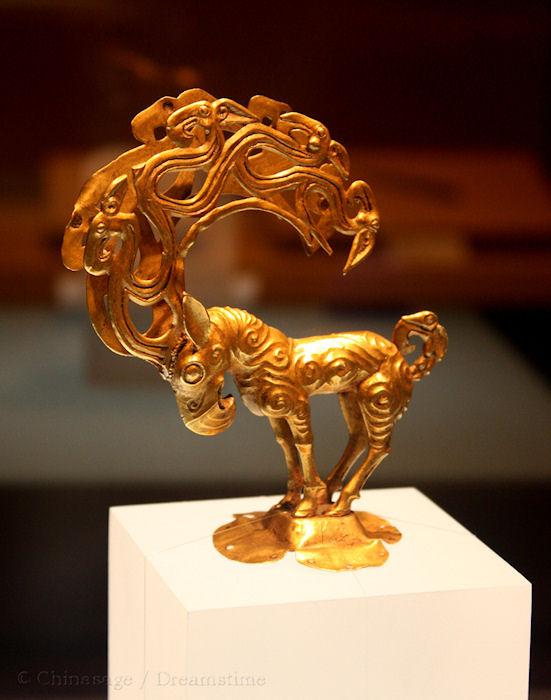
The Qinling mountain range contains Mount Hua ➚ (or Huashan Flower mountain); it is one of the five traditional sacred Daoist mountains of China. The mountain has five peaks, the South Peak is the highest at 7,070 feet [2,155 meters]. It is a tough climb, starting at Yuquan Garden ➚ (Jade fountain) from where the path takes 18 bends before a perilous climb up sheer rock faces. Despite claiming many lives of climbers ➚ over the years it remains a popular hike.
In the drier northern half of the Shaanxi province Yan'an has the claim to fame as the eventual destination of Mao's Long March of 1935-6. A museum sets out many materials from this period. Midway to Yan'an on the road from Xi'an is the reputed tomb of Yellow Emperor Huangdi at Huangling. In the southern part of the province, the heritage of the ancient Shu kingdom ➚ from the time of the Three Kingdoms can be seen. To emphasize the cultural heritage of the province, Shaanxi has its own individual style of traditional Opera.
Geography
Shaanxi is isolated from the climatic extremes of China, although it can still be hot in summer, with generally low rainfall. There is a distinct north-south divide from the fairly dry north to the mountainous south which catches more rain and so there is more vegetation. Since 1949 efforts have been made to plant trees to both stabilize the loess soil and maintain moisture. The rivers irrigate extensive fields of wheat and cotton, further south, rice and maize are grown. Maojian tea from Ziyang is a famous product. Industrialization is aided by copious deposits of coal and oil within the province.
Airports
The airport has 1 terminal and is located 9.9 miles (16.0 kms) from Yulin. Live Flight information ➚, rank in China 62
See map of location Yulin Yuyang Airport
The airport has 3 terminals and is located 25.5 miles (41.0 kms) from Xi'an. Live Flight information ➚, Airport information ➚, rank in China 9
International Links to :Korea Japan
See map of location Xi'an Xianyang International Airport
Universities
Xi'an Jiaotong University 西安交通大学
The leading university at Xi'an and surrounding provinces is Xi'an Jiao Tong University (XJTU). It was set up to concentrate on engineering and technology in 1896, at Shanghai and in 1956 was split into two: the Shanghai Jiao Tong and the Xian Jiao Tong Universities. The university has expanded from its original subject base to provide teaching in a full range of subjects.. Undergraduates: 17000, Postgraduates: 13000, International students: 500, GP World ranking 331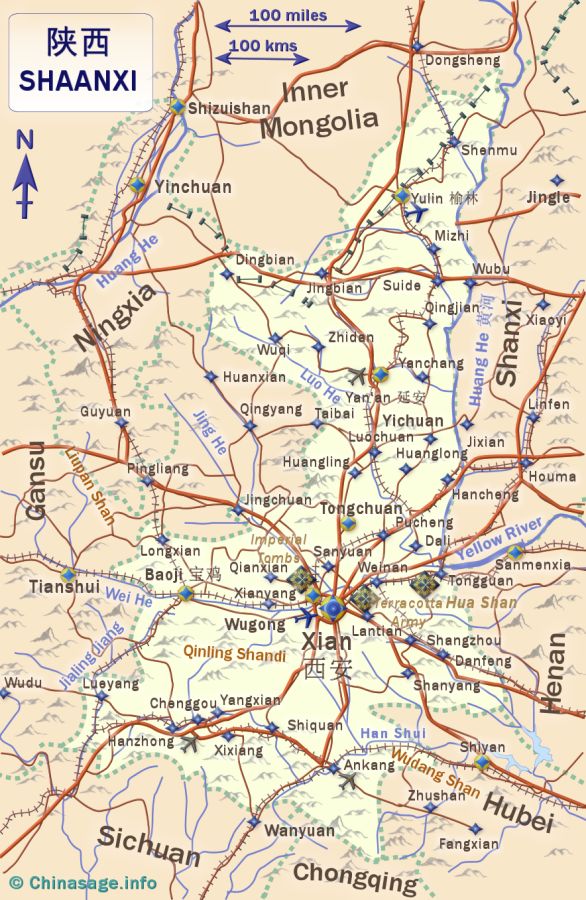
Google map of Shaanxi
Bing map of Shaanxi ➚
Show Bing Map ➚
Shaanxi Climate
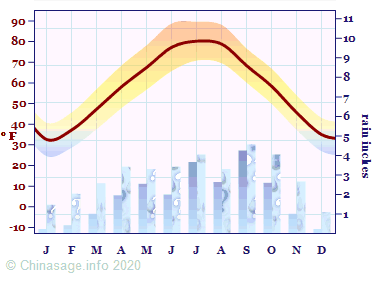
| Major Cities | Population | |
|---|---|---|
| Baoji | 宝鸡 | 1,437,802 |
| Xi'an | 西安 | 11,904,805 |
| Xianyang | 咸阳 | 1,034,081 |
| Yan'an | 延安 | 2,150,800 |
| Yulin | 榆林 | 1,117,800 |
Web page: :: XINHUANET :: ➚
Book: 60 Scenic Wonders in China: New World Press: 1980 pp. 195-210
Book: A Map History of Modern China: Catchpole: Heinemann: 1976 pp. 48-50
Book: China : Eyewitness Travel: Dorling Kindersley: 2012 pp. 161-171
Book: China through the sliding door: John Gittings: 1999 pp. 121-122
Book: Insight Guides: China: APA publications: 1994 pp. 205-211
Book: Lonely Planet: China: 1988 pp. 14, 24, 265-281
Book: Modern China: A companion to a rising power: Graham Hutchings:… pp. 368-370
Book: Nagel's Encyclopedia guide: China: Nagel: 1978 pp. 919-968
Book: Symbols of China: Feng Jicai: Compendium: 2010 p. 131
Book: The Water Kingdom: Philip Ball: Vintage: 2017 p. 113
Web page: Map of Shannxi Province ➚
Web page: Shaanxi Travel Guide - Massive Ancient Relics Discovered ➚
Web page: Shaanxi Travel Guide: Location: Map: Climate: History: Attractions ➚
Web page: Xi'an (archaeology) ➚
City populations for 2012, Province statistics National Bureau of Statistics 2014